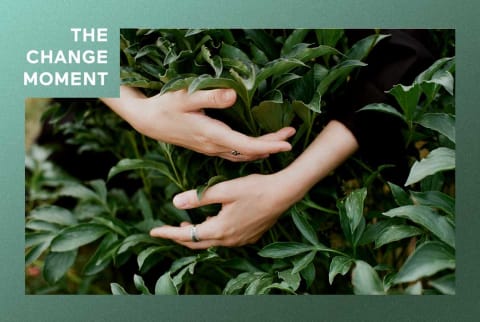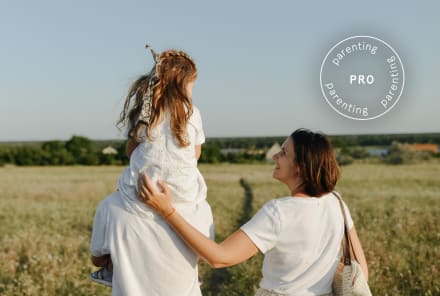Advertisement
Nature Is Watching Us: 5 Ways To Reconnect With The Earth


Perhaps because we like to be the center of our own lives, most of us look at nature without reflecting on the degree to which she is watching us too. We walk into a forest and look out, all without seeing and comprehending how many beings are looking back at us.
This placement of ourselves at the center, elevating our own needs and wants, is a form of anthropocentrism so common it often goes uncommented upon, as it's been deeply normalized by modern culture. Yet not all cultures have revolved around the needs of individual humans. Many ancestral cultures, in fact, prioritize the needs of the Earth out of an appropriate recognition that we are small, and she is feeding us.
For example, in Hawaiian, the word for land is aina, which means "feeding place" or "that which feeds us." Earth is our great mother, and she feeds us all. After the Earth, these cultures prioritize the needs of the culture, both its continuity and renewal, over the needs of individuals.
When we start to see ourselves as part of the web of life rather than outside or above it, it changes our relationship with the world around us.
How a hummingbird with a bald patch changed the way I think about the natural world.
I remember learning from connection phenomenologist Jon Young about an awareness held by the San people of the Kalahari Desert, likely the oldest continuous culture on earth. The San have a concept of building ropes. It goes something like this:
If you go out in nature and recognize an individual bird, in that moment of recognition, a tiny, energetic thread forms between you. Each time you go out into nature and recognize that animal, this thread grows a little bit stronger until it becomes a cord, and then a rope.
The San say that becoming San—becoming human, really—is to create ropes with all of creation.
When I first encountered this awareness, it opened my mind. It had never occurred to me that it was possible to recognize an individual bird. I was used to identifying species of birds, pleased with myself to recognize a dark-eyed junco or a Bewick's wren. The San's philosophy stunned me. Was it possible, I wondered, to build a rope between myself and an animal? I don't live in the Kalahari region or hunt with a bow and arrow. I generally stalk my food in aisle seven of Whole Foods or Trader Joe's.
But one day, my daughter and I were walking around our home, and we paused to watch a group of hummingbirds sword fighting with their bills in vivid displays of territorial dominance. Up they went, 50 to 100 feet, before they swooshed down, snapping their tails and chasing away competitors before landing on a branch.
We both noticed that one particular hummingbird kept coming back to the same branch, about the width of a pencil, on a small crepe myrtle tree. We moved closer to the tree until we were 6 feet away. The birds were too fast to track through the air, but reliably, the bird returned to this same branch three, four, and five times. On perhaps the sixth return, my daughter and I realized that the bird was missing several feathers on its facial ruff. It was like he had a bald patch in his beard. And uncannily, precisely at this moment, the hummingbird turned toward us both and stared into our eyes. We both felt a jolt. We looked at each other, and our mouths dropped open. It was real.
For the next month, we visited "Flurry the Hummingbird" each day. We would wonder where he was when he spent too much time away from his favorite perch. A month later, when he left to migrate, we both grieved. For those magical days, we'd had a hummingbird for a friend, and suddenly new motions, new songs, and new rhythms had entered our days and dreams. I think about him still, and this was five years ago.
Once you make friends with a hummingbird, you notice them everywhere. They become woven into the net of your belonging, as does anything you truly love. And with this seeing of one another arises an accountability. I would have helped Flurry if I could have, and I certainly wouldn't have harmed him. What we are connected to we have a relationship with, take care of, and value. What we don't, we don't.
Why it's important to thank nature daily.
A respect for living systems becomes possible when we accurately understand our proper place in the universe. My mentor John Stokes, founder of The Tracking Project, explains that ancient people understood that our real size is somewhere between an ant and a mountain, and the proper response to the natural beauty around us is gratitude.
All around us, we are surrounded by what we need to live. And so John reminds us that we should say, "Thank you." A lot.
When we go out into nature with an attitude of gratitude, when we say thank you to the living world around us, it becomes harder to dissociate. It becomes harder to sit in our cars, letting them idle and belch carbon, while we're thanking the trees for making the oxygen we breathe. Suddenly we realize, "I'm saying thank you, and meanwhile, I'm destroying what I'm thanking." This creates a helpful cognitive dissonance.
What we do to the Earth, we do to ourselves.
We live in a world that's very good at pulling apart cause and effect: We go to the grocery store and buy burgers packaged in cellophane, so our children don't realize they're eating a cow. They don't see the slaughterhouse floor. They don't know what they're eating was once alive.
This system is dissociative by design. We pour paint down the drain, but where does it end up? Back in our bodies because we're drinking that water. We emit pollutants, and where do they end up? Back in our lungs because we're breathing that air. What we do to the Earth, we do to ourselves.
How to get to know the nature around you.
How would our behavior change if we understood that our relationship with nature is a two-way street? If we really understood, in fact, that we are nature. How is it that we've forgotten this anyway?
When I started stewarding a forest, I didn't anticipate how it would improve my physical health. Yes, you read that correctly. The forest began to recognize me. I could feel it. It watched me spend an entire year cleaning out deadwood. I think she thought I was combing her hair. I showed up, weekend after weekend, and I did this because I love the forest. Soon, she started giving me very precise instructions.
I don't want this to sound woo-woo because these ways of knowing are older and deeper than the rational mind.
There was a moment when I tried to put a gate up across the forest entryway to keep out the neighbor. I finished hammering with relish, closed the gate, and immediately got an intense headache. "That's odd," I thought. I opened the gate, and the headache went away. Befuddled, I left the gate open, went home, and returned the next day.
The following morning on my way in, I shut the gate behind me casually—as if the forest wouldn't notice. Instant headache. "All right," I said out loud. "I get it."
In my own mind, I heard, "I don't belong to you."
After reflecting on what had happened, I realized that the road I was closing—a simple driveway to me—was an animal highway to the forest and its creatures. That each night, deer, foxes, coyotes, bobcats, raccoons, quail, and the occasional mountain lion all made their way across this road. Would I close their front door just to make it more convenient for me? Perhaps the headache I felt was side-eye from the animals as they silently exclaimed, "Really? You're gonna do us like that?"
I could have ignored it, I suppose. But I don't like headaches.
Thank goodness nature is watching us back. It makes things so much simpler. We don't need to figure out what to do. We just need to figure out how to be better listeners. Given this, what can we do to be better listeners and fall back into reciprocity with the Earth?
- Spend more time outdoors. Modern Americans are outside, on average, only 7% of the time by some estimates. What this means is that you don't live in a particular state or ZIP code. You live between your couch, car, office, and your bed. Get outside!
- Build a relationship with the living world around you. Though the design of suburbs and cities belies this truth, every place on Earth is specific. From its deep geology to its plant and animal life to its climate, every place on Earth has an identity as a place. Get to know your place. Study its geology, weather, plants, and animals. Get to know your nonhuman neighbors.
- Get down close to the ground. There are dramas unfolding beneath you all the time. Spend 10 minutes sitting still in the grass of a field, and you'll witness life close to the soil in all its abundance. Beetle wars. The magnificent work of worms. The movement of winged things. It can be more interesting than television.
- Tend your place. Once you know something about it, see if you can enhance the life in the place you live. If you think of the Earth as a feeding place—and yourself as a steward of this—what can you do to make it a more abundant feeding place for your human and nonhuman kin? How can you make it safer for them? Who else, for example, is ingesting the pesticides on your lawn? Maybe this means planting a tree or a garden. Try to respect the place by feeding and growing native species.
- Study the impacts of your actions. If we wait for climate legislation and government mandates to solve climate change, we won't get anywhere. It's only by feeling the pain we're causing Mother Earth and changing our behavior that we can hope to create a new future.
The bottom line.
Nature recycles everything and wastes nothing. How can we bring our lives more into alignment with the design intelligence of living systems? How brave can you be in bringing your world into alignment with life? Be brave and start now.
Watch Next
Enjoy some of our favorite clips from classes
Enjoy some of our favorite clips from classes
What Is Meditation?
Mindfulness/Spirituality | Light Watkins
Box Breathing
Mindfulness/Spirituality | Gwen Dittmar
What Breathwork Can Address
Mindfulness/Spirituality | Gwen Dittmar
The 8 Limbs of Yoga - What is Asana?
Yoga | Caley Alyssa
Two Standing Postures to Open Up Tight Hips
Yoga | Caley Alyssa
How Plants Can Optimize Athletic Performance
Nutrition | Rich Roll
What to Eat Before a Workout
Nutrition | Rich Roll
How Ayurveda Helps Us Navigate Modern Life
Nutrition | Sahara Rose
Messages About Love & Relationships
Love & Relationships | Esther Perel
Love Languages
Love & Relationships | Esther Perel











